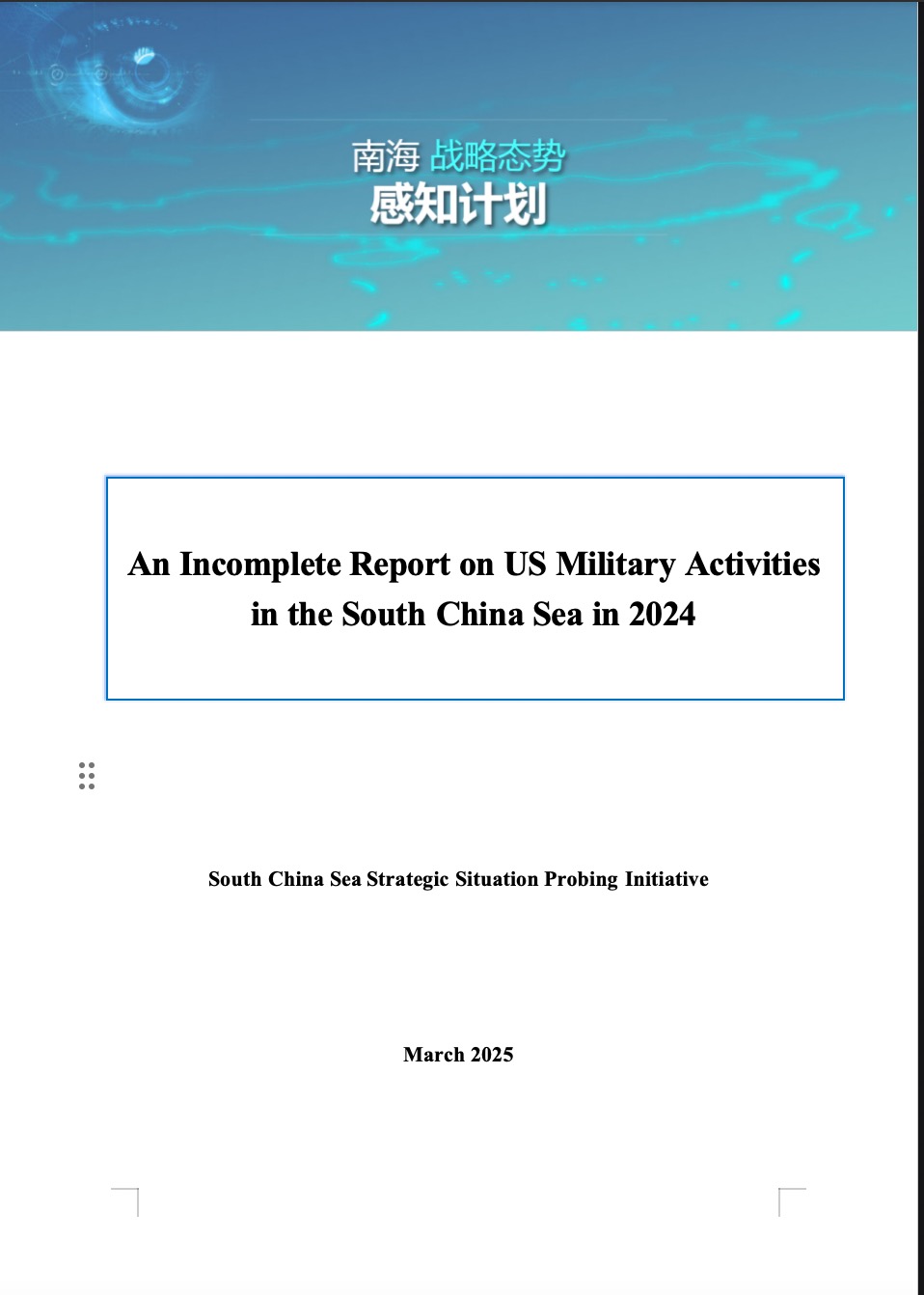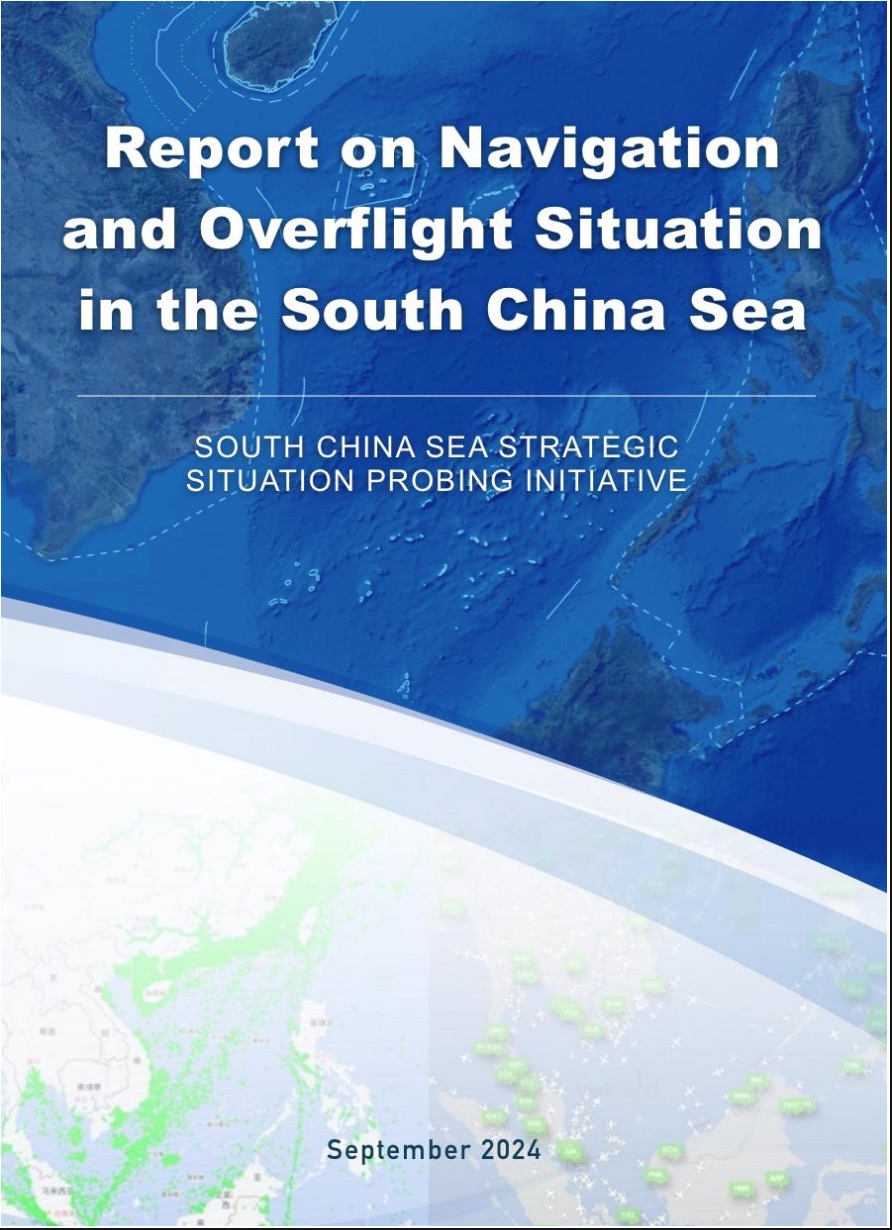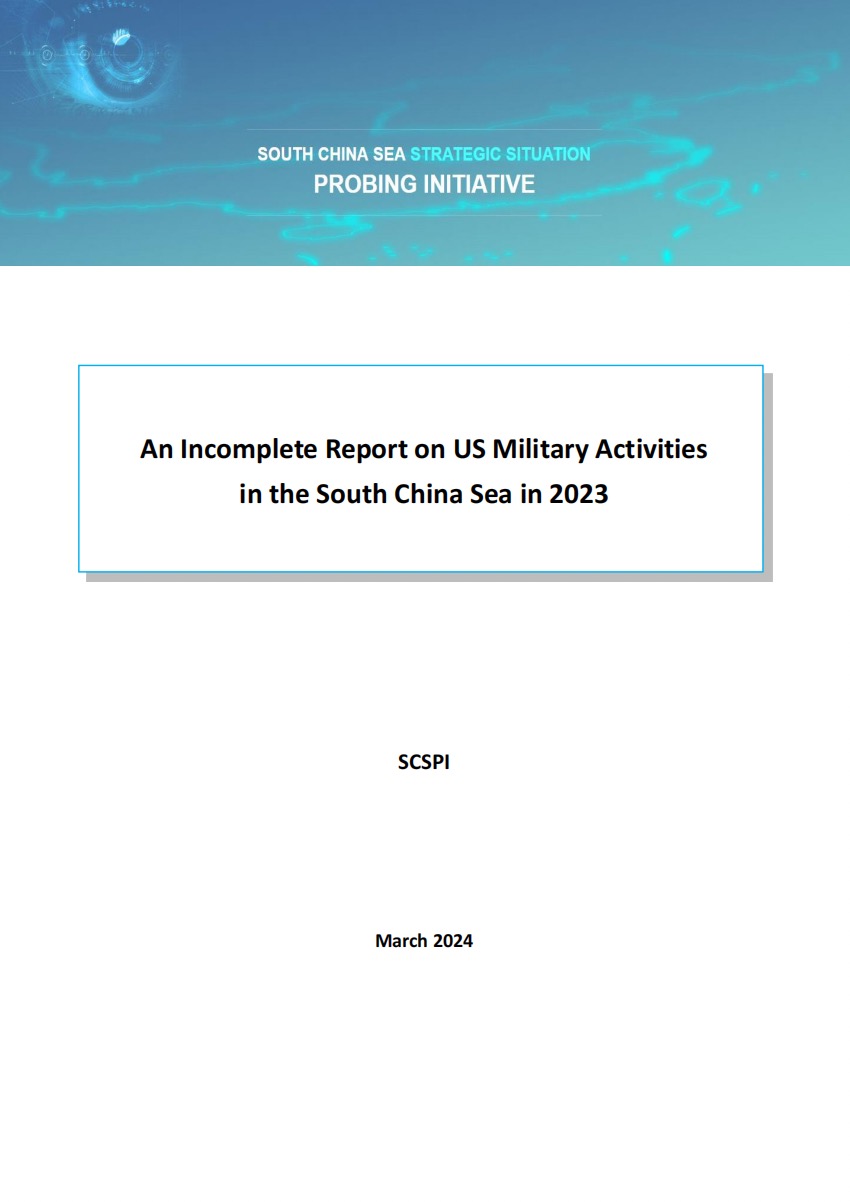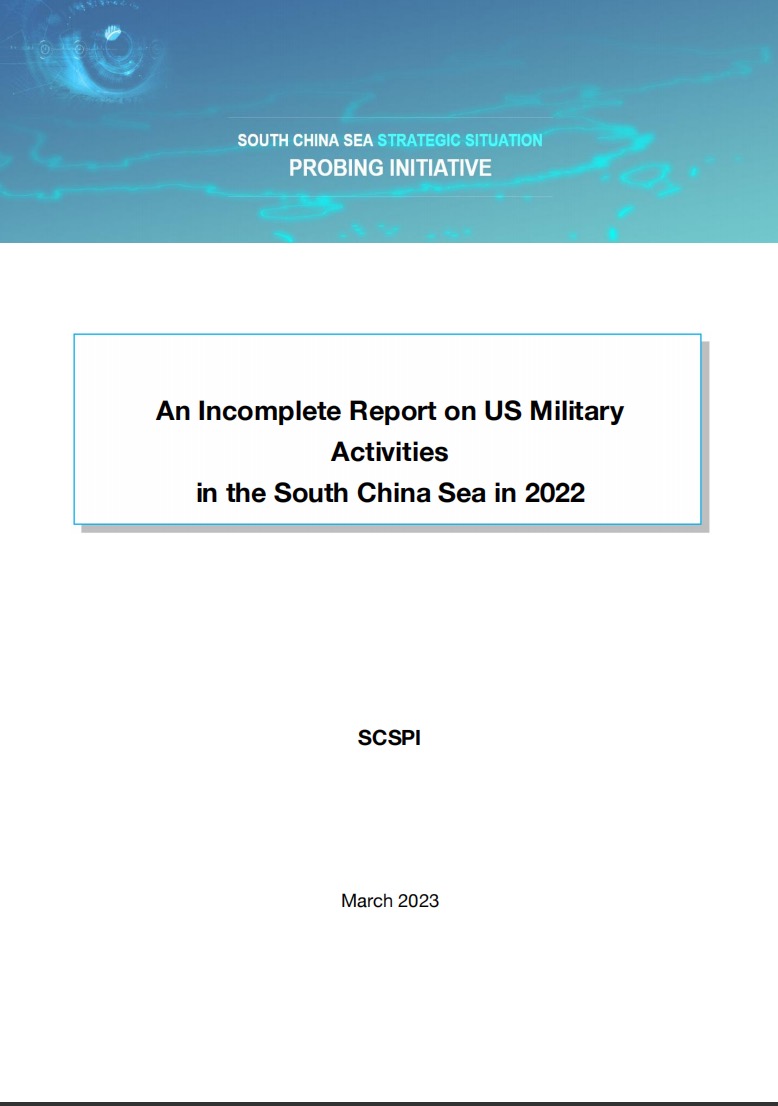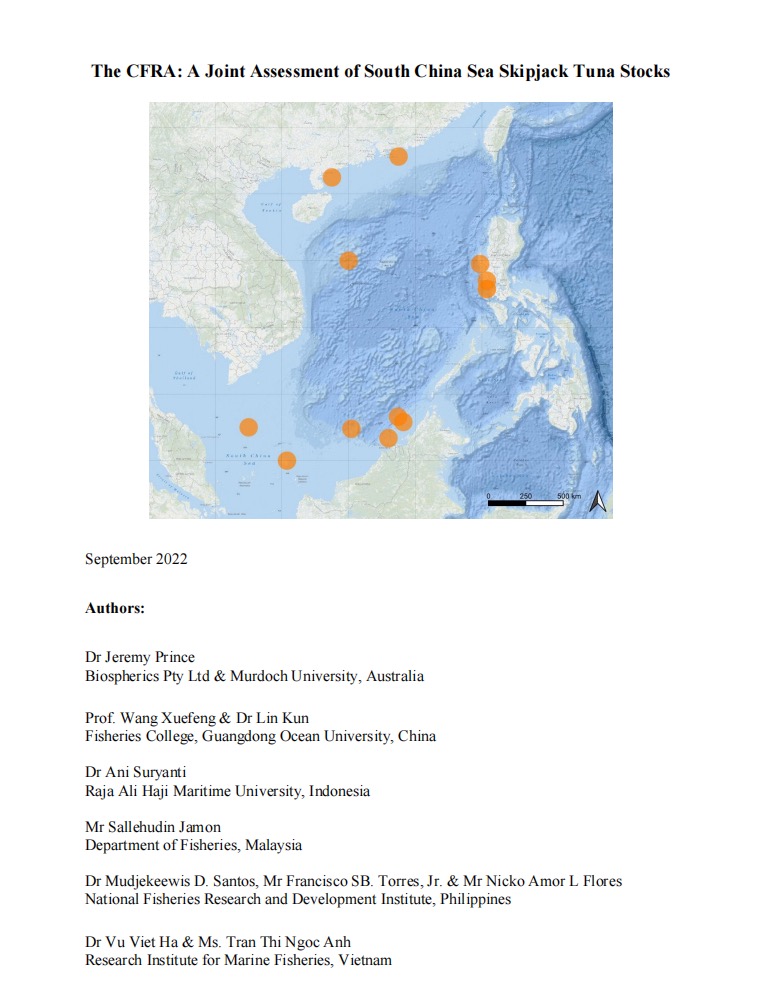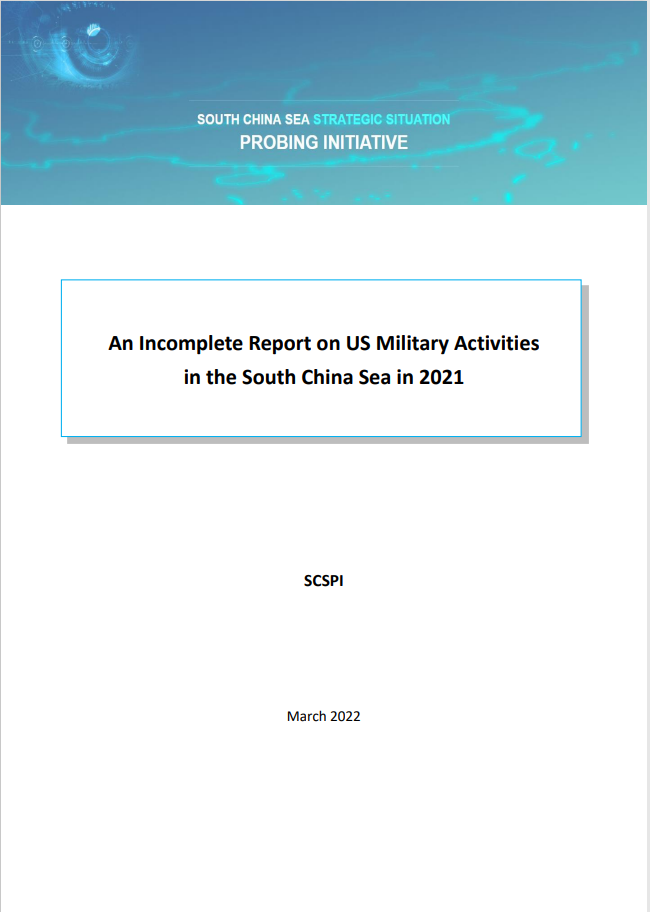2025-03-25 | SCSPI
In 2024, the US military continued to strengthen its military deterrence against China, maintaining high-intensity operations including close-in reconnaissance, Taiwan Strait transits, forward presence, strategic cruising, military exercises and drills, as well as battlefield preparation in the South China Sea and its surrounding areas. Among them, large reconnaissance aircraft conducted about 1,000 missions, and ocean surveillance and measurement vessels accumulated 706 ship days of activity, marking a significant increase compared to 2023. Carrier strike groups (CSGs) have entered the South China Sea 8 times, demonstrating a strong presence. At least 11 nuclear attack submarines, two guided missile submarines and one ballistic missile submarine appeared in the region throughout the year, signaling a clear deterrence intention. Additionally, the number of batches and sorties of bombers entering the South China Sea has significantly increased, with frequent exercises of “north-south double” and “distributed operations”.
2024-09-26 | BY SCSPI
In recent years, driven by US attempts to “contain China” using maritime disputes, tensions in the South China Sea have escalated. The intensification of certain disputes has attracted significant international attention. However, current frictions mainly exist among some disputing parties, and any relevant disputes have not affected other countries’ navigation and overflight freedoms in the South China Sea. China-US militaries’ interactions and encounters in the area are generally professional and safe. The impact of great power competition on navigation and overflight freedoms in the South China Sea remains manageable. The primary threats to maritime navigation are non-traditional security factors such as geographical obstacles, natural disasters, unbalanced development, piracy, and armed robbery against ships, which have long been overlooked and lack due attention.
2024-03-21 | BY SCSPI
In 2023, the US military continued to strengthen its military deterrence against China, maintaining high-intensity activities including close-in reconnaissance operations, Taiwan Strait transits, forward presence, strategic cruising, military exercises and drills, and battlefield preparation in the South China Sea and its surrounding areas. Around 1,000 sorties of large reconnaissance aircraft conducted close-in reconnaissance, frequently approaching Chinese mainland airspace. Carrier strike groups (CSGs) and amphibious ready groups (ARGs) entered the South China Sea eight times, with increased duration, and training intensity. At least 11 nuclear attack submarines (SSNs) and two ballistic nuclear missile submarines (SSBNs) appeared in the region, signifying a clear intent for deterrence. Additionally, both joint operations with allies and partners and the use of unmanned systems were prominent among the US military activities in the South China Sea in 2023.
2023-03-26 | BY SCSPI
In 2022, in the context of the Russia-Ukraine conflict, the US military placed great emphasis on military deterrence against China in the South China Sea, maintaining high-intensity activities including close-in reconnaissance operations, Taiwan Strait transits, forward presence, strategic deterrence, freedom of navigation operations (FONOPs), military exercises and drills, and battlefield construction. Around 1,000 sorties of large reconnaissance aircraft conducted close-in reconnaissance, including reportedly reaching the Chinese mainland’s territorial air space several times. CSGs and amphibious ready groups (ARGs) entered the South China Sea eight times, down from 12 times in 2021, but the duration of each deployment increased, mostly for more than 10 days. At least 12 nuclear attack submarines (SSNs) appeared in the South China Sea, with a clear aim to exert deterrence. As the former Speaker of the US House of Representatives Nancy Pelosi’s visit to Taiwan escalated the Taiwan Strait Situation sharply, the US military’s forward deployment and operations in the South China Sea strengthened the linkage with the Taiwan Strait and the East China Sea.
2022-09-05 | BY The CFRA
Katsuwonus pelamis, listed in the United Nations Convention on the Law of the Sea (UNCLOS) as a highly migratory stock, is a South China Sea species that is fished heavily by rival claimants. Political disputes over sovereignty claims have made joint fisheries management difficult, if not impossible. The absence of a regional fisheries management organisation (RFMO) in the South China Sea further compounds this difficulty. As a result, no authoritative collaborative stock assessment on this or other stocks in the South China Sea has been carried out in recent years. New efforts by fisheries scientists from China, Indonesia, Malaysia, the Philippines and Vietnam to develop a Common Fisheries Resource Analysis (CFRA) of katsuwonus pelamis in the South China Sea therefore represents a significant development in both regional science and regional cooperation. Using the Length-Based Spawning Potential Ratio (LBSPR) methodology, this paper examines the stock health of katsuwonus pelamis in the South China Sea. This delivers increased evidence to support domestic fisheries policymaking and develops norms and standards for regional cooperation.
2022-03-27 | BY SCSPI
In 2021, as the US placed great emphasis on military deterrence against China, the US armed forces maintained a high tempo of military activities in the South China Sea, such as close-in reconnaissance operations, Taiwan Strait transits, forward presence, strategic deterrence, “freedom of navigation operations (FONOPs)”, military exercises and drills, and battlefield preparation. Specifically, large reconnaissance aircraft conducted nearly 1,200 close-in reconnaissance sorties over the South China Sea, several of which came close to only around 20 nautical miles away from China’s baselines. The US carrier strike groups (CSGs) and amphibious ready groups (ARGs) entered the South China Sea 12 times, more than twice the frequency in 2020. At least 11 nuclear-powered attack submarines (SSNs) deployed to the South China Sea and its surrounding waters throughout the year, among which the Seawolf-class fast-attack submarine USS Connecticut (SSN-22) even “struck an underwater mountain” in the northern waters of the South China Sea. In addition, with a significantly stronger focus on China, the US military has given more emphasis to “great power competition” with respect to strategies, tactics, concepts of operations (CONOPS) and weapons research and development.

